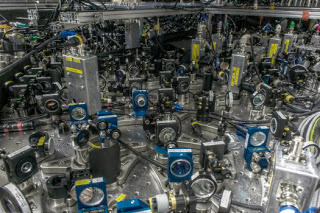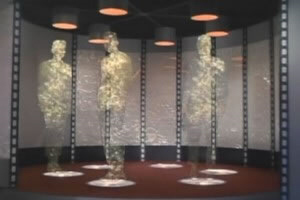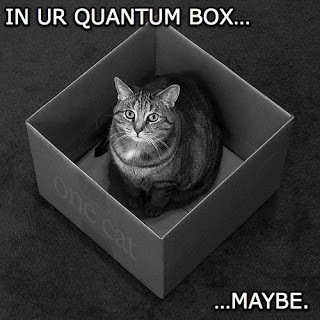Beam Me Up, Scotty: Teleportation, Schrődinger's Cat and Quantum Entanglement
 What do the terms squeezing, photon subtraction, entanglement and homodyne detection have in common? Together, they represent the quantum manipulation that researchers used to achieve the first documented case of successful teleportation of quantum light.
What do the terms squeezing, photon subtraction, entanglement and homodyne detection have in common? Together, they represent the quantum manipulation that researchers used to achieve the first documented case of successful teleportation of quantum light. In the journal Science last Friday, researchers reported that they had successfully transferred quantum information from one place to another without having to physically move it. It was destroyed in one place and instantly resurrected in another, "alive" again and unchanged. A notion exploited in the film Prestige, based on an teleportation invention by Nikola Tesla. It's also pretty much what happens in the SF show Star Trek in which an object is "destroyed" atom by atom in one place then built back with the same pattern elsewhere.
 It starts with entanglement of the quantum kind and an Austrian physicist named Erwin Schrődinger. In 1935, Schrődinger came up with a thought experiment in response to a paradox paper by Einstein, Podolsky and Rosen (called the EPR article). Schrődinger's scenario of a cat that might be alive or dead inside a box, depending on an earlier random event became known as Schrődinger's Cat. Schrődinger coined the term "entanglement" (Verschränkung) to describe a property of a quantum mechanical system (paired particles) that act together and behave like one object but remain two separate objects—like two ends of a teeter-totter. If entangled, one object cannot be fully described without considering the other(s). They remain in a quantum superpostition and share a single quantum state until a measurement is made. He proposed the notion that said cat remains both alive and dead (to the universe outside the box) until the box is opened.
It starts with entanglement of the quantum kind and an Austrian physicist named Erwin Schrődinger. In 1935, Schrődinger came up with a thought experiment in response to a paradox paper by Einstein, Podolsky and Rosen (called the EPR article). Schrődinger's scenario of a cat that might be alive or dead inside a box, depending on an earlier random event became known as Schrődinger's Cat. Schrődinger coined the term "entanglement" (Verschränkung) to describe a property of a quantum mechanical system (paired particles) that act together and behave like one object but remain two separate objects—like two ends of a teeter-totter. If entangled, one object cannot be fully described without considering the other(s). They remain in a quantum superpostition and share a single quantum state until a measurement is made. He proposed the notion that said cat remains both alive and dead (to the universe outside the box) until the box is opened. In the Science paper, researchers from Japan and Australia led by Noriyuki Lee of the University of Tokyo studied wave packets of light that existed in a state of quantum superposition—in other words, they existed in two different phases at the same time. They successfully transferred quantum information without losing its integrity.
Superposition permits computers to solve multiple problems at once. This new, faster teleportation process lets scientists move blocks of quantum information around inside a computer or across a network. This will potentially revolutionize quantum communications and computing. Researchers say it will make high-speed, high-fidelity transmission of large volumes of information, such as quantum encryption keys, via communications networks a reality.
 According to most scientists, what we won't see soon — or ever — is something that will 'beam' a person from one place to another. "There are way too many atoms," says Christopher Monroe of the Joint Quantum Institute. "At the other end of the transporter, you need to have some blob of atoms that represents Captain Kirk but has no information in it. I mean, what would that look like?"
According to most scientists, what we won't see soon — or ever — is something that will 'beam' a person from one place to another. "There are way too many atoms," says Christopher Monroe of the Joint Quantum Institute. "At the other end of the transporter, you need to have some blob of atoms that represents Captain Kirk but has no information in it. I mean, what would that look like?" NikolaTesla's notion over a hundred years ago of light as both a particle and a wave formed the basis of what we now call quantum physics. Tesla also investigated the creation of a "wall of light" by manipulating electromagnetic waves in a certain pattern, which he claimed would enable time, space, gravity and matter to be altered at will and engender anti-gravity airships, teleportation and time travel.
So, here's my question: is our imagination limited by our reality or our reality limited by our imagination?
Published on April 25, 2011 23:11
No comments have been added yet.



